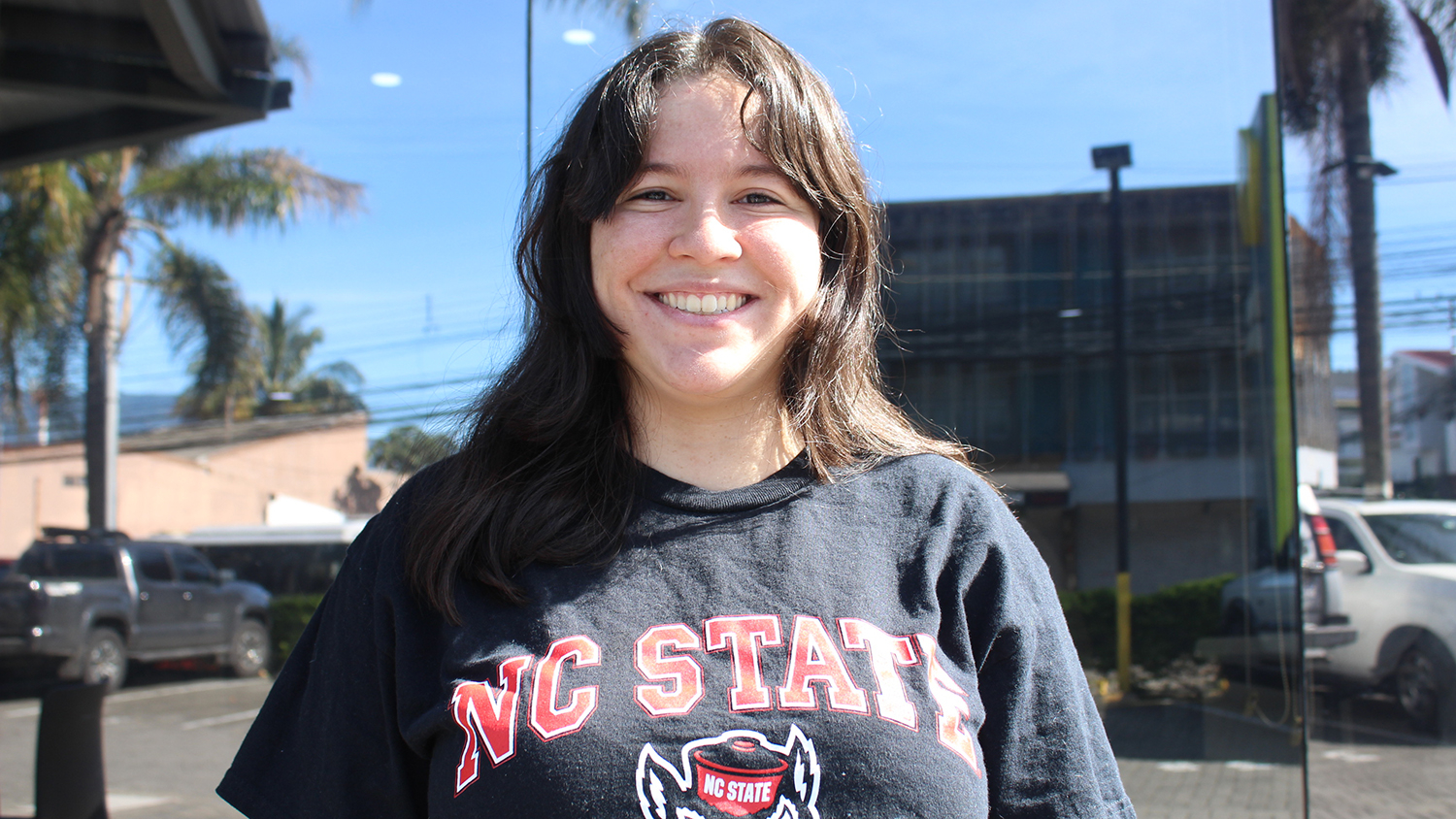CBE Grad Student is Bridging the Art-and-Science Divide
A first-ever artist's residency with the N.C. Plant Sciences Initiative leads to creative exploration at the intersection of art and science.

While popular opinion tends to place art and science at opposing poles, artist Leah Sobsey is more inclined to focus on the ground they share in helping us understand our world.
A reception last week at North Carolina State University’s Plant Sciences Building brought artists, scientists and their supporters together to celebrate art that Sobsey created as part of a partnership between the N.C. Plant Sciences Initiative and the Gregg Museum of Art & Design.
The reception was just one aspect of a semester-long, plant-focused interdisciplinary partnership between the N.C. PSI and the Gregg Museum.
Sobsey is a curator and associate professor of photography at the University of North Carolina Greensboro, and as artist-in-residence with the N.C. PSI, she shadowed three graduate students this semester and developed works of art reflecting their plant sciences research.
“This is about noticing, it’s about caring, and it’s about creating, hopefully with empathy for our planet and for each other.”
Each of the pieces unveiled at the reception is, as she put it, “an attempt to uncover some meaning — some unknown meaning — similar to how each of these researchers is working in the lab to uncover meaning.”
Quoting writer Maria Popova, Sobsey noted, “‘The aim of science is to eliminate the mysteries of nature. The aim of art is to give us a language for living with that mystery. Creativity in both is a style of noticing, of attending to the world more closely in order to love it more deeply.’
“For me, really this is about noticing, it’s about caring, and it’s about creating, hopefully with empathy for our planet and for each other,” she added.
Mohammadreza Zare and ‘GaIn’

Sobsey’s piece on Mohammadreza Zare’s research relies on harder materials — glass and metal — and a dramatic grayscale palette.
‘Galn’ is a collection of photographic prints on glass and metal. The work draws connections between materials and processes used in photography and those used in the plant sensor technology Zare is working on.
“Light, metal and chemistry converge in these abstract black-and-white prints that reference landscape, the body and the solar system, inviting reflection on process, materiality, data and transformation.”
Working with Profs. Michael Dickey and Qingshan Wei, Zare uses a gallium-based alloy that overcomes some of the limits of using other materials in plant sensors. Unlike harder, opaque metals like gold and silver, the ultrathin liquid metal is transparent, allowing light needed for plant growth to pass through. It’s also flexible enough to bend as leaves do.
The plant sensors that Zare is helping develop sit on leaves and provide continuous data that can signal problems before plants show visible symptoms.
Similarly, film photography can reveal hidden phenomena, with an interplay of light, chemistry and metals revealing latent images. Sobsey uses a gallium-based material provided by Zare to create ‘Galn.’

As the exhibit label explains, the piece “explores the material and alchemical foundations of photography through process. Light, metal and chemistry converge in these abstract black-and-white prints that reference landscape, the body and the solar system, inviting reflection on process, materiality, data and transformation.”
Art to spark creativity and problem-solving innovation
For Sobsey, working with Zare, Devihalli and Pil was an extension of work she’s done at the intersection of art and science for nearly two decades.
“I still find it thrilling – always a little intimidating — to be working with scientists, but I feel that we have a lot to learn from each other,” she said.
Having witnessed the boundary-crossing learning come out of the artist’s residency and related art-and-science activities this fall, N.C. PSI Executive Director Adrian Percy believes similar collaborations could spark creativity and problem-solving innovation in and beyond the plant sciences.
“We have over 100 faculty that are part of our program coming from nine different colleges across campus. … We literally have rocket scientists and nuclear engineers who are working on agricultural challenges across the state, and that’s very, very powerful,” he said. “But what we’ve lacked is the arts.
“I hope this experiment, if we can call it that, is one of a long line of things that … we do together with our partners.”
This is an edited version of an article originally written by Dee Shore for N.C. PSI News.
This post was originally published in Department of Chemical and Biomolecular Engineering.
- Categories:


